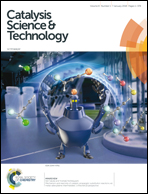Mechanism and reactivity of catalytic propargylic substitution reactions via metal–allenylidene intermediates: a theoretical perspective
Abstract
Development of transition metal-catalyzed propargylic substitution reactions is still in progress as a novel synthetic tool, while a variety of allylic substitution reactions have been well established and widely used in organic synthesis. In this review, we summarize the mechanism and reactivity of transition metal-catalyzed propargylic substitution reactions from a theoretical point of view. We classify the reaction mechanisms for transition metal-catalyzed propargylic substitution reactions which have been reported to date, and then discuss, in particular, the reactions via metal–allenylidene intermediates.



 Please wait while we load your content...
Please wait while we load your content...